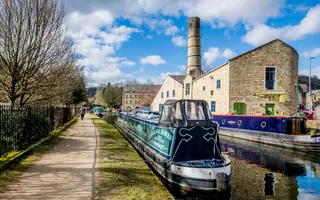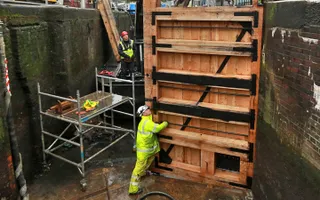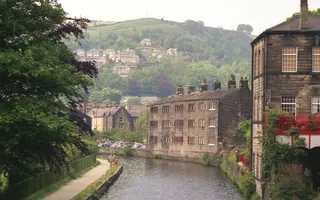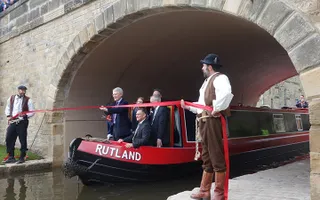The Rochdale Canal crosses the rugged heights of the Pennines from Manchester to Sowerby Bridge. The steep climb means lots of locks and an exhausting but exhilarating journey with stunning views.
For boaters, this canal is a peaceful place to escape the crowds along the Two Roses Ring. The towpath is probably the easiest walking route through the Pennines, taking you into the heart of the hills at a relatively gentle gradient. However, there is also plenty of access to more challenging routes for serious hiking.
The Rochdale Canal re-opened to boats in 2002 after an ambitious volunteer restoration project that brought an end to more than 50 years without through navigation. Obstacles had included two motorways, countless road blockages and a scheme to fill the channel with concrete.
Days out along the Rochdale Canal
Download our free family days out guides - Hebden Bridge is just one of 123 places to visit along our canals.
Where does the water come from?
Rochdale Nine
Water supply to the Rochdale Nine, in Manchester, comes from several sources, all east of Manchester. The main water supply is from Hollingworth Lake Reservoir, owned by United Utilities PLC.
Water can also be supplied from the adjoining Ashton Canal which is in turn supplied from the Peak Forest Canal and Hudderfield Narrow Canal which are supplied by reservoirs on the edge of the Peak District.
Lock 90 Albion Mill & Lock 91 Deansgate on the 31 mile long Rochdale Canal form part of a series of locks (84 - 92) known locally as the Rochdale Nine.
It takes 248,000 litres of water to fill Deansgate lock, Albion Mill is slightly smaller.
These locks are filled and emptied over 500 time a year.
Tuel Lane Lock
The north-eastern part of the Rochdale Canal, from it's summit to Sowerby Bridge where it joins te Caldar & Hebble Navigation is supplied by many different water sources.
Feeders and Chelburn Reservoir are the main feeds to the summit. Chelburn Reservoir is owned by United Utilities (UU. The Trust has an agreement with UU who provides water to help support levels in the canal.
Many feeders supply the canal as it falls towards Sowerby Bridge and Halifax. Sun Drain and Smithyholme are the most significant feeders.
At Luddenden Foot up from the River Calder to top-up the canal if reservoir resources are not enough or become unavailable.
Tuel Lane Lock, built during the canal restoration in 1996 to replace original locks 3 & 4, is the deepest lock in the UK with a fall of 6 metres.










